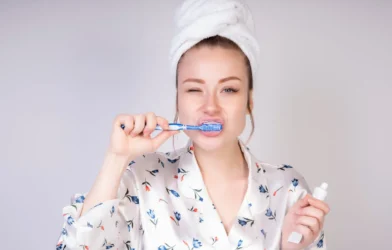When it comes to men’s formal wear, the distinction between a dinner suit vs business suit can make or break your appearance at any event. Whether you’re attending a black-tie gala or closing a corporate deal, understanding these key differences ensures you’ll always be appropriately dressed. Let’s explore everything you need to know about these essential wardrobe staples.
What is a Dinner Suit? Understanding Evening Formal Wear
A dinner suit, commonly known as a tuxedo in North America, represents the pinnacle of men’s evening formal wear. This sophisticated garment features distinctive design elements that set it apart from regular business attire. The most notable characteristic is the satin or silk lapels, which create an elegant contrast against the matte fabric of the jacket.
Traditional dinner suits come in black or midnight blue, with the jacket featuring either peak lapels or shawl lapels. The trousers include a satin stripe running down the outer seam, matching the lapel trim. This formal evening wear is specifically designed for events after 6 PM, including weddings, galas, opera performances, and other special occasions requiring black-tie dress code.
The complete dinner suit ensemble includes a crisp white dress shirt with a wing collar or turndown collar, black bow tie, black patent leather shoes, and often white pocket squares or boutonnieres for added elegance.
Business Suit Essentials: Your Professional Wardrobe Foundation
A business suit serves as the cornerstone of professional menswear, designed for daytime wear and corporate environments. Unlike the ornate details of evening wear, business suits prioritize versatility and practicality while maintaining a polished appearance.
These suits typically feature notched lapels made from the same fabric as the rest of the jacket, creating a uniform appearance. Available in various colors including navy, charcoal, gray, and brown, business suits offer flexibility for different professional settings and personal preferences.
The styling is more conservative, with clean lines and minimal embellishments. Business suit trousers are plain-front or pleated, without the decorative satin stripes found on formal evening wear. This versatility makes them suitable for office meetings, business lunches, conferences, and other professional engagements.
Key Differences: Dinner Suit vs Business Suit Comparison
Design and Construction
The most apparent difference lies in the lapel construction and fabric choices. Dinner suits feature luxurious satin or grosgrain silk lapels that catch light beautifully under evening illumination. Business suits maintain consistency with fabric lapels that blend seamlessly with the jacket body.
Color Options and Fabric Choices
While business suits offer a rainbow of colors and patterns, dinner suits traditionally stick to classic black or midnight blue. The fabric choices also differ significantly – dinner suits often use finer wool blends or even silk, while business suits prioritize durability with sturdy wool fabrics suitable for frequent wear.
Appropriate Occasions and Dress Codes
Understanding when to wear each style is crucial for proper etiquette. Dinner suits are reserved for formal evening events with specific dress codes like “black-tie” or “formal.” Business suits work for daytime professional settings, casual evening events, and occasions without strict formal requirements.
Style Guidelines: How to Wear Each Suit Properly
Dinner Suit Styling Tips
When wearing a dinner suit, attention to detail is paramount. Pair your tuxedo with a proper dress shirt featuring French cuffs and cufflinks. The bow tie should always be self-tied rather than clip-on, and patent leather shoes are non-negotiable. Avoid flashy accessories – elegance comes from understated sophistication.
Business Suit Best Practices
Business suits offer more flexibility in styling. Choose dress shirts in white, light blue, or subtle patterns, and coordinate with appropriate neckties. Leather dress shoes in black or brown should match your belt, and pocket squares can add personality without being overpowering.
Investment Considerations: Quality vs Budget
Both dinner suits and business suits represent significant wardrobe investments, but their usage frequency differs dramatically. Most men wear business suits regularly, making quality construction essential for durability. Dinner suits, worn less frequently, can justify higher per-wear costs for premium materials and craftsmanship.
Consider renting dinner suits for occasional use, especially if you attend formal events infrequently. For business suits, invest in versatile colors and classic cuts that will serve you for years across various professional situations.
Frequently Asked Questions
1. Can I wear a business suit to a black-tie event?
No, business suits are not appropriate for black-tie events. These occasions specifically require dinner suits or tuxedos. Wearing a business suit would violate the dress code and appear inappropriate for the formality level expected.
2. What’s the difference between a tuxedo and a dinner suit?
“Tuxedo” and “dinner suit” refer to the same garment, with “tuxedo” being the American term and “dinner suit” being the British term. Both describe formal evening wear with satin lapels and matching satin-striped trousers.
3. Can I wear a dinner suit during the day?
Traditional etiquette dictates that dinner suits should only be worn for evening events after 6 PM. Wearing formal evening wear during daytime hours is considered a fashion faux pas and violates established dress code conventions.
4. How many business suits should a professional man own?
Most style experts recommend owning at least three business suits: one in navy, one in charcoal gray, and one in a lighter gray or brown. This provides sufficient variety for regular professional wear while allowing for cleaning rotation.
5. Are dinner suits more expensive than business suits?
Generally, yes. Dinner suits often cost more due to premium materials like silk lapels, fine wool fabrics, and specialized construction techniques. However, prices vary significantly based on brand, quality, and whether you choose ready-to-wear or custom tailoring.
Final Thoughts
Mastering the distinction between dinner suits and business suits elevates your style game and ensures appropriateness for any occasion. While business suits form the backbone of professional wardrobes with their versatility and practicality, dinner suits provide unmatched elegance for life’s most formal moments.
Remember that fit is paramount regardless of which style you choose. A well-tailored business suit will always look better than an ill-fitting designer dinner suit. Invest in proper alterations, understand the dress codes for your events, and build your formal wardrobe gradually with quality pieces that will serve you for years to come.
Whether you’re climbing the corporate ladder or attending elegant evening affairs, having both options in your wardrobe ensures you’re always dressed to impress.














